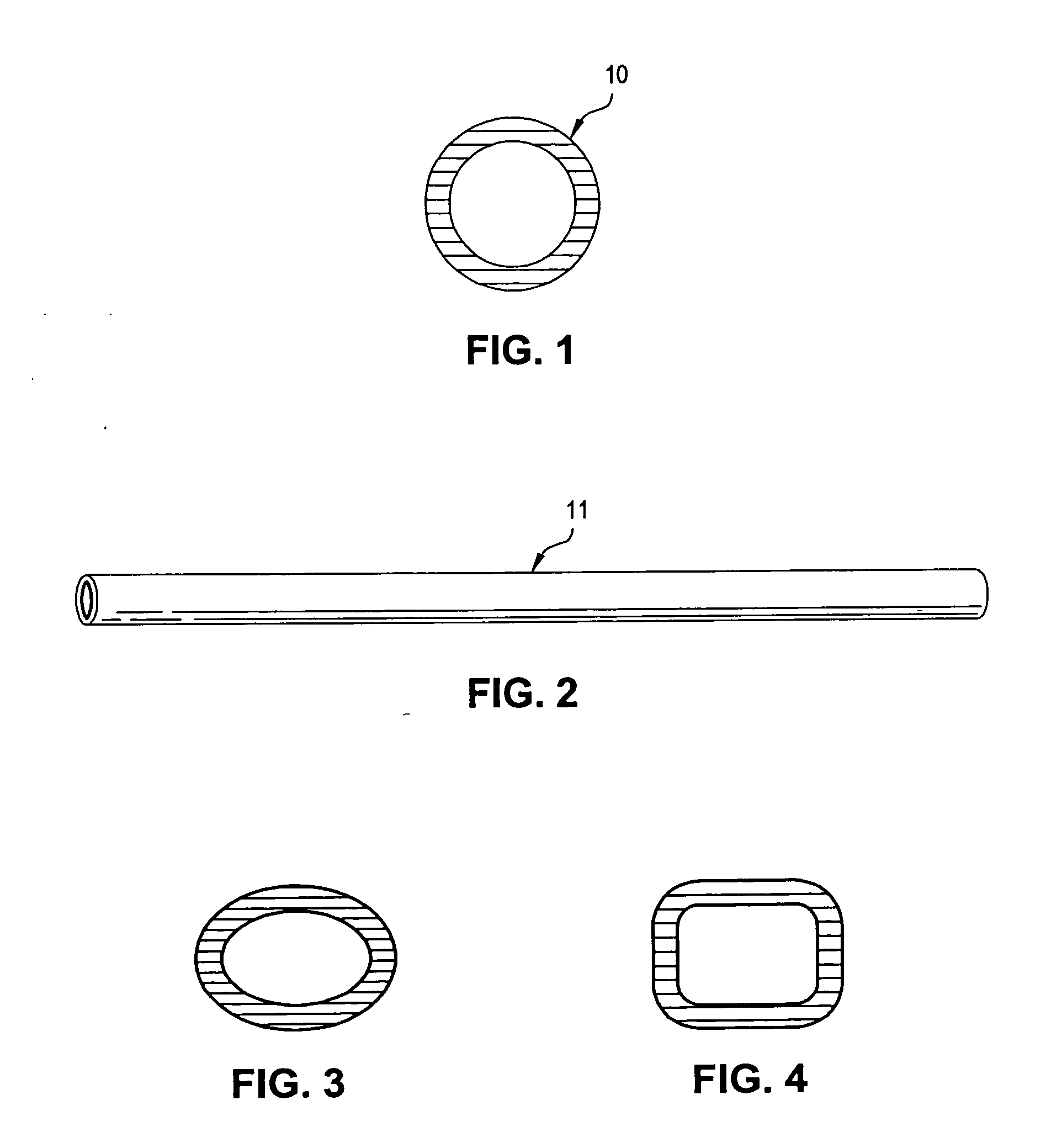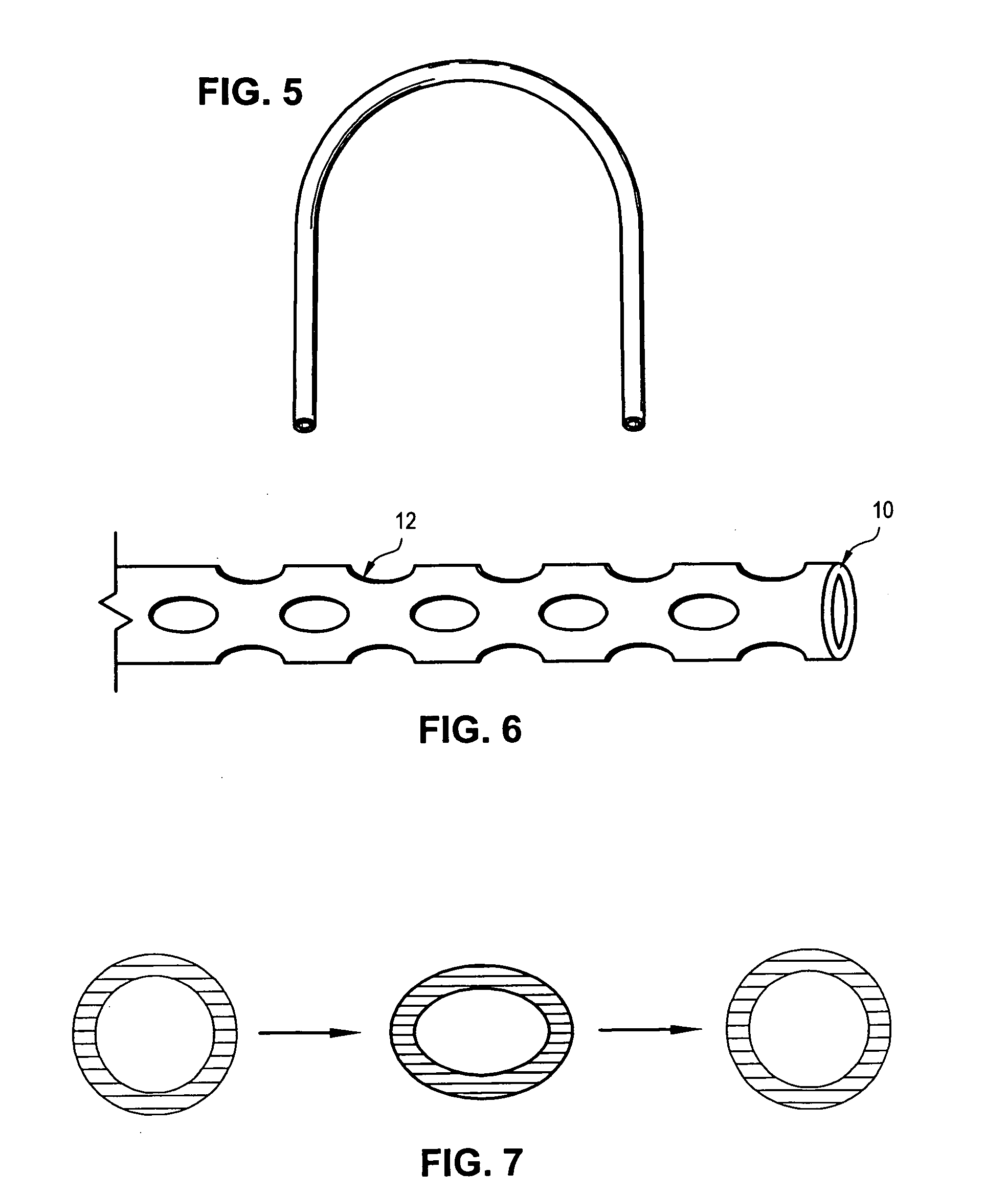Tubular orthodontic arch wire
a tubular, orthodontic technology, applied in the field of tubular orthodontic arch wires, can solve the problems of brackets falling off from teeth, patient experience extreme discomfort, and orthodontic appliances are too strong to withstand, so as to reduce friction, reduce force levels, and reduce the effect of for
- Summary
- Abstract
- Description
- Claims
- Application Information
AI Technical Summary
Benefits of technology
Problems solved by technology
Method used
Image
Examples
Embodiment Construction
[0020] The preferred embodiment is a thin walled tube as is depicted in FIGS. 1 and 2. The tube is preferably made from a super-elastic, shape memory material, preferably nickel titanium alloy that is shaped in the form of a dental arch dimensioned to fit into the bracket slots and tubes of orthodontic appliances. The dimensions range from a round tube with an outside dimension of 0.012-inch diameter to as large as a rectangular tube with outside dimensions of 0.025 by 0.030 inches. The arch tube may be made in different shapes such as but not limited to round as in FIG. 1, oval as seen in FIG. 3, or rectangular as seen in FIG. 4. The tube can easily be manufactured in a round configuration but can later be reshaped through compression and heat treatment into different shapes. Alternatively, a mandrel may be inserted into the tube and the tube heat-treated to change its shape. The tube may have multiple shapes within the same tube such as oval in the middle and round toward the ends...
PUM
| Property | Measurement | Unit |
|---|---|---|
| diameter | aaaaa | aaaaa |
| length | aaaaa | aaaaa |
| super-elastic | aaaaa | aaaaa |
Abstract
Description
Claims
Application Information
 Login to View More
Login to View More - R&D
- Intellectual Property
- Life Sciences
- Materials
- Tech Scout
- Unparalleled Data Quality
- Higher Quality Content
- 60% Fewer Hallucinations
Browse by: Latest US Patents, China's latest patents, Technical Efficacy Thesaurus, Application Domain, Technology Topic, Popular Technical Reports.
© 2025 PatSnap. All rights reserved.Legal|Privacy policy|Modern Slavery Act Transparency Statement|Sitemap|About US| Contact US: help@patsnap.com



